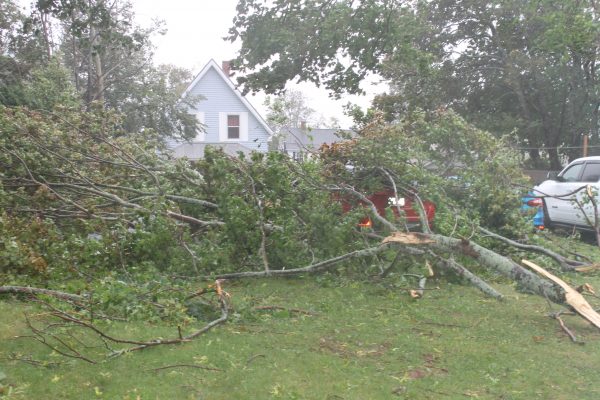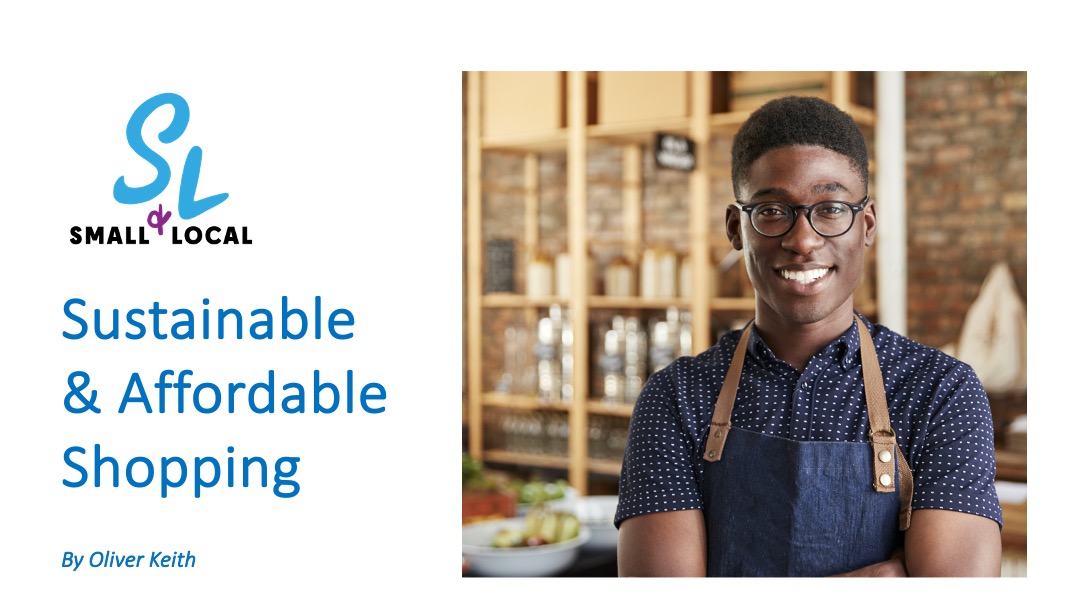Sustainable shopping that is also affordable is hard. But even harder is global warming—a real, looming, and ever-growing problem. Recent hurricanes Fiona and Ian are very real proof of that.

Global warming truly is a persistent and universal problem. And, for me, this knowledge gives this sense of powerlessness. I’m sure many of you can relate. After all, 25% of Canadians feel “very alarmed” regarding global warming. And, to be frank, it is a reasonable feeling. How do I combat a problem that is so much bigger than me?
To make matters worse, buying “sustainable” can be more expensive than environmentally ‘unfriendly’ options. The book The Story of Stuff, explains this well. Plastic products, for example, are more costly to use if recycled than just making more plastic, making comparable sustainable products more expensive. Another example is meat, dairy, and egg products. At retail, these factory farm items are artificially cheaper because of government subsidies to those industries, making eco-friendly options ‘more expensive’.
Sustainable companies try to source their production materials ethically and pay participants in the supply/production chain fair wages, which results in a higher (arguably actual) cost of their products. That’s why, when it comes to shopping at a local store rather than a big box chain, prices are often higher. However, this isn’t always the case! You can check out some cheaper local produce (and more) options in our How to Shop Local in Times of Inflation blog here.
But take heart. The Story of Stuff finishes on a hopeful note: “Nothing is more important than finding a way to live together—justly, respectfully, sustainably and joyfully.”
It’s in this spirit that I’m writing to you today. To help you find sustainable and affordable local options in your efforts to help lower your carbon footprint to help combat climate change, on the micro level. After all, lots of us acting micro will have a macro impact!
Alright, let’s go!
Sustainable Shopping: Thrift More
Thrift culture is booming. In 2019, around 40 per cent of Gen Z-ers were buying second-hand, compared to less than 30 per cent in 2016—and this isn’t necessarily a bad thing. A critical part of shopping more eco-friendly is buying within a circular market. And the added fashion bonus of thrifting? Getting name brands for cheap prices—all the while being more sustainable. Gotta love that!
Luckily, Nova Scotia is home to a variety of cool local thrift stores. Check out some below!

Sustainable Shopping Online: Try Etsy, Not Amazon!
This really does make a difference. Etsy is dedicated to being carbon neutral, the businesses they feature are small (thus generally more sustainable), and the items are either handmade or vintage. While not local geographically, Etsy is home to many local businesses, at home and abroad, and gives you many options for an overwhelming variety of handcrafted items across Canada—from nails to pastry!
Sustainable Shopping: Repair Before Replacing
Buying new doesn’t always have to be the way. Depending on the shoe, a repair job can be far cheaper than getting a new pair of shoes. The question now is, where? Well, the Maritimes has many clothing and shoe repair options for you to try.

Sustainable Shopping: General Tips and Local Options
Sometimes, when being green and shopping green, you need a list of tips and tricks that get the job done. Well, here’s four right here.
1. Sometimes, shopping environmentally friendly also comes with a bit of prep! Bring your own takeout containers to restaurants instead of using their single-use plastic/styrofoam ones.
2. Shampoo, conditioner, body wash, shave cream… all of it can be found in bar form. It is much better for the environment and often cheaper in bulk.

Local Options:
3. This one’s tiny, but I’ll still say it loud—REUSABLE STRAWS.
Local Option:
4. If you wash your face and/or need to remove makeup, use reusable cotton rounds with micellar water (for makeup removal) or cotton face towels. Don’t use any single-use items on your face anymore.
Local Options:
An Important Reminder
As we stated, it’s essential to remember that the more profound responsibility to the environment is less the consumer and more the corporation. After all, 71% of all industrial environmental degradation stems from large corporations. So, how can you give that a push toward greater corporate environmental accountability and systemic change?
Here are five local Atlantic Canadian organizations that would love your support in doing just that!
Atlantic Coastal Action Program (ACAP)
- “ACAP is a practical demonstration of the joint management, or collective governance approach to Integrated Coastal Management and offers lessons to governments and coastal communities looking to establish lasting partnership approaches that have the potential to achieve the sustainable development of coastal ecosystems.”
- “The Back to the Sea Society offers “‘Community Aquariums,” which are alternative marine education centres that have been emerging across Canada and hold an important place in ocean conservation.”

East Coast Environmental Law Association
- “East Coast Environmental Law envisions a future in which laws and legal systems protect ecological health and promote environmental and climate justice in Atlantic Canada. We take a dynamic approach to environmental advocacy in Atlantic Canada. By engaging with diverse individuals, groups, and communities in our region, we work to ensure that environmental laws and policies throughout Atlantic Canada are founded on responsible, transparent, proactive, and inclusive decision-making.”
- “Green Schools Nova Scotia is an exciting initiative brought to you by Efficiency Nova Scotia to enhance environmental sustainability at schools. This free program helps support students, teachers, and the larger school community as they learn to waste less and become more energy efficient.”
Happy Atmosphere Environmental Society
- “The Happy Atmosphere environmental society was created with the idea and hope of change. Our mission is to raise awareness of environmental issues impacting the Nova Scotia Community.”
Be Easy on Yourself
To be both affordable and sustainable is not easy in today’s age. It takes a lot of consideration, compassion, looking and thinking. Even though we’ve helped you here with some of the thinking (please add your tips in the comments too), sometimes it can still be exhausting.
But remember, your impact, even if small, is an impact regardless. So keep doing your best, look into some of the local providers when you can, and find your sustainable and affordable happy medium. You’ve got this!

Thank you for this piece !!!So true.
I use sustainably sourced supplements and it is a big part of our Co and what we do and I have my own store which is where i buy my products from. Our Health is our Wealth literately !! We also support malnourished children globally as The Children are our future!!